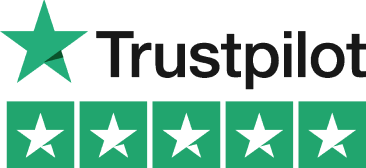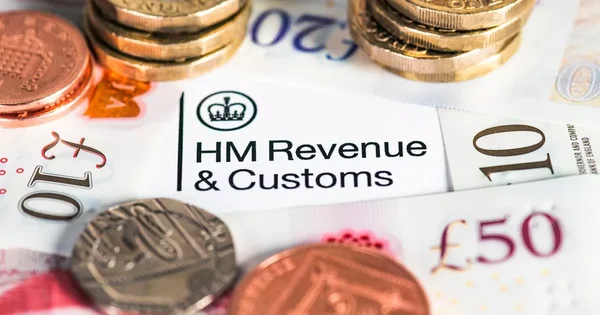Let’s Break This Down Together...
Making Tax Digital (MTD) is changing how tax works in the UK. If you're self-employed or a landlord, you might be wondering what it means for you.
This article explains what MTD is, who it affects, and when it starts. We'll also cover software requirements, exemptions, and how to avoid penalties.
By the end, you’ll know exactly how to stay compliant without the stress. Let’s dive in!
A New Era for UK Tax: What MTD Means for You
Making Tax Digital (MTD) represents the biggest change to the UK tax system in a generation. It's HMRC's ambitious plan to make tax administration more effective and efficient.
The initiative is being rolled out in phases, affecting different taxes and businesses at different times. Understanding MTD requirements is crucial for businesses and individuals to remain compliant.
What is Making Tax Digital?
Making Tax Digital (MTD) is HMRC’s initiative to transform the UK tax system into one of the most digitally advanced in the world. It moves away from traditional paper-based processes to a fully digital experience. The current system of paper-based or manual submissions is being phased out in favor of digital processes.
At its core, MTD requires businesses to keep digital records and submit tax returns using MTD-compatible software. The new rules require businesses to comply with digital record-keeping and submission standards. No more paper records or manual calculations!
The main goal is to reduce tax errors, which cost the Treasury billions each year. By digitising everything, HMRC hopes to create a more accurate system. This transformation includes digital for income tax, which applies to self-employed individuals and landlords, streamlining their tax record-keeping and reporting.
MTD also introduces more regular updates to HMRC. This creates a real-time view of tax obligations rather than the annual scramble many businesses experience.
Tax digital for VAT is already in effect for VAT-registered businesses, while income tax MTD is the specific initiative for income tax compliance. When submitting tax returns using software, digital links are required to ensure data is transferred directly and securely between software and HMRC.

Who Needs to Go Digital? MTD Rules by Income and Status
Making Tax Digital (MTD) for income tax is set to transform how self-employed individuals and landlords manage their tax affairs. From April 2026, if your annual gross income from self-employment and/or property letting exceeds £50,000, you’ll need to follow the new MTD rules. This threshold drops to £30,000 from April 2027, so it’s important to keep an eye on your income if you’re close to these limits.
Gross income means your total income from self-employment and rental income before any expenses are deducted. If you have more than one source of income say, you’re both a sole trader and a landlord you’ll need to add up all your qualifying income to see if you meet the threshold for MTD for income tax.
The government has confirmed that partnerships will also be brought into the MTD system in the future, although the start date hasn’t been set yet. For now, the focus is on sole traders and landlords with qualifying income. If you fall into this group, you’ll be required to keep digital records and submit your tax returns electronically, moving away from paper-based record keeping.
This shift is a key part of the UK tax system’s move towards a fully digital approach, aiming to make tax digital for everyone and reduce errors. If you’re self-employed or a landlord, now is the time to review your income from self employment and rental income, and get ready for the new digital record keeping requirements.
Can You Opt Out? MTD Exemptions and Who They Apply To
Not everyone will need to follow the new MTD for income tax rules. HM Revenue & Customs (HMRC) recognises that some taxpayers face genuine barriers to going digital. If you’re digitally excluded perhaps due to unreliable internet, a disability that makes computer use difficult, or living in a remote area with poor broadband you may be eligible for an exemption.
There are also exemptions for practising members of a religious society whose beliefs prevent them from using electronic communications or keeping electronic records. Additionally, if you don’t have a National Insurance number, you may be automatically exempt from MTD requirements.
To apply for an exemption, you’ll need to meet specific criteria and submit an application to HMRC. Exemptions can cover income tax, VAT, or both, depending on your situation.
If you’re automatically exempt, you won’t need to apply, but if you believe you qualify for another reason, it’s important to submit your application to avoid penalties. The exemption application process is expected to open from October 2025, and full guidance is available on GOV.UK
If you think you might be digitally excluded or otherwise unable to comply with MTD for income tax, check the HMRC website for the latest information and make sure you apply in good time.

When Does MTD Apply to You? Key Dates and What to Expect
MTD is being introduced gradually. For VAT, it’s already here, all VAT-registered businesses must now comply with MTD rules. Businesses with a taxable turnover above the VAT threshold are required to file VAT returns digitally under MTD.
Limited companies, as well as sole traders, must comply with MTD for VAT if they are VAT-registered. VAT-registered businesses must submit VAT returns using MTD-compatible software. It is important to submit each VAT return on time to avoid penalties.
For Income Tax Self Assessment (ITSA), the rollout has been delayed. Businesses with income over £50,000 will need to comply from April 2026.
Those with income between £30,000 and £50,000 get more time, with MTD for ITSA starting from April 2027. I remember the collective sigh of relief when this delay was announced!
Corporation Tax will also join the MTD family eventually. However, HMRC hasn’t confirmed exact dates for this phase yet. Businesses and their software providers can participate in HMRC's testing phase to ensure readiness before the full rollout.
Choosing the Right Software for MTD – It’s Easier Than You Think
To comply with MTD, you’ll need approved software that can keep digital records and connect to HMRC’s systems. This doesn’t mean expensive accounting packages are necessary.
HMRC has worked with software providers to ensure free options are available for businesses with simpler needs. It’s important to check with your software provider to ensure your chosen solution is fully compatible with MTD requirements. If you love your spreadsheets, don’t worry!
Bridging software exists that can connect your Excel files to HMRC’s systems. You’ll still need to keep records digitally, though.
The software must be able to receive information from HMRC about your business. It also needs to send tax return information back to HMRC. For tax digital for income, the software must support digital record-keeping and submissions specifically for income tax.

Quarterly Updates Made Easy
With MTD for income tax, the way you report your income and expenses to HMRC is changing. Instead of the traditional annual self assessment tax return, you’ll now need to submit quarterly updates using compatible software. These updates cover your business and property income, as well as any related expenses, and must be sent to HMRC by the 7th day of the month following each quarter’s end.
If your accounting software allows, you can choose to align your update periods with the calendar quarters, making it easier to keep track. At the end of the tax year, you’ll submit a final declaration this replaces the old self assessment tax return and confirms that all your income and expenses for the year are complete and accurate.
To stay compliant, you must keep digital records of all your transactions, including every bit of income and every expense. This digital record keeping is essential for supporting your quarterly updates and final declaration. Using MTD-compatible accounting software or apps makes this process much easier, helping you stay organised and up to date.
HMRC offers an online tool to help you check if and when MTD for income tax applies to you. Make sure you use this tool to understand your obligations and keep your tax affairs in order.
Why MTD Works for You
While change can be scary, MTD brings some real benefits. Digital record-keeping reduces errors – no more mistyping numbers or losing receipts! It also helps you confirm your income tax position with HMRC more accurately and efficiently.
You’ll have clearer visibility of your tax position throughout the year. Having all your data in one digital system allows you to monitor your tax obligations in real time. This helps with cash flow planning and avoids nasty surprises.
Many businesses report that once they’ve switched to digital systems, they actually save time on tax admin. The software does calculations automatically.
In the long run, a more efficient tax system should mean less tax lost to avoidable errors. This is good news for public services.

How to Prepare for MTD
First, check when MTD will affect your business based on your turnover and tax types. Knowing your deadline gives you time to prepare properly. Choose MTD-compatible software well before your deadline. You'll want plenty of time to get comfortable with the new system.
If you have staff who handle your finances, make sure they get training on the new digital systems. Preparation is key to a smooth transition.
Consider chatting with an accountant for advice tailored to your specific business needs. They can help you choose the right software approach.
MTD Roadblocks? Here’s How to Overcome Them with Ease
If you genuinely can’t use digital tools due to age, disability, location or other factors, you can apply for an exemption. HMRC recognises that digital isn’t possible for everyone. Worried about software costs? Explore free or low-cost options designed for smaller businesses. Some basic MTD-compatible tools are quite affordable.
If you’re struggling to connect existing systems, bridging software might be the answer. It creates a digital link between your current setup and HMRC. Linking your bank account to your accounting software can also help automatically track income and expenses for MTD compliance.
Setting up regular check-ins with your accountant can help address compliance concerns. Better to solve issues before they become problems.
MTD Mistakes Can Cost You: Here’s How to Stay Penalty-Free
Missing MTD deadlines can lead to penalties. HMRC uses a points-based system: each missed submission earns a point, and hitting the threshold means a £200 fine plus another £200 for each late update after that.
If you don’t pay your tax on time, late payment penalties and interest also apply. Some taxpayers may be exempt if they’re digitally excluded, but an application to HMRC is usually required.
To avoid fines, use MTD-compatible software, keep your records updated, and submit everything on time. Staying organised is the key to staying penalty-free.

Why Early Prep Pays Off with MTD
Making Tax Digital represents a significant shift in how UK taxpayers interact with HMRC. While the transition may seem daunting at first, the long-term benefits make it worthwhile.
With proper preparation and the right tools, MTD can actually simplify tax compliance. It can also give you better financial insights for your business.
The key is to start early – don't wait until the deadline is looming. Getting your digital tax house in order now will save headaches later.











